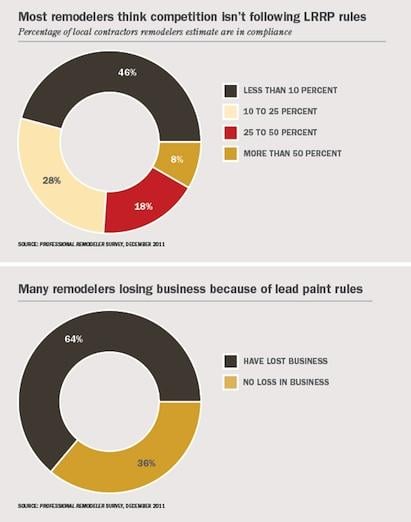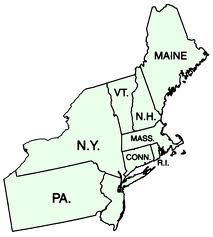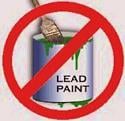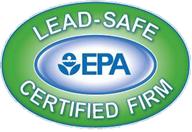Do My Sub Contractors Need To Be RRP Certified?
 There has been a lot of confusion regarding the details of the EPA RRP rule. One that seems to pop up over and over is certification requirements for sub contractors. There are two different certification considerations regarding sub contractors; firm certification and worker certification. Let’s take a look at each separately.
There has been a lot of confusion regarding the details of the EPA RRP rule. One that seems to pop up over and over is certification requirements for sub contractors. There are two different certification considerations regarding sub contractors; firm certification and worker certification. Let’s take a look at each separately.
Firm Certification for Sub Contractors:
The EPA is very clear on this. The following question and answer comes from the EPA web site’s FAQ page:
Question: My firm performs renovations covered by the RRP rule, but solely in the capacity of a subcontractor. If the general contractor is a certified firm, does my firm also have to be certified, or can we just provide the certified renovator?
EPA Answer: All firms performing, offering, or claiming to perform renovations covered by the RRP rule must be certified. In this case, both the general contractor and subcontractor must become certified firms.
 Whether working for the general contractor as a trade partner or a 1099 sales person (offers the work), sub contractors must become certified firms by apply for certification through the EPA. Ensuring that the subs they use are certified firms is particularly important for general contractors, because as part of the required documentation under the rule, the renovation checklist must include the names of all workers who participated in RRP activities on the job. If a sub contractor and his workers do work on the job and the sub’s firm is not certified, the EPA will easily be able to find both the general contractor and the sub in violation of the rule. If a general contractor knows that subs must be certified firms, hiring a non-certified firm to work on a job becomes a knowing and willful violation of the rule, which brings with it serious penalties. It’s also one easy way for a customer’s lawyer to suggest the contractor is/was negligent.
Whether working for the general contractor as a trade partner or a 1099 sales person (offers the work), sub contractors must become certified firms by apply for certification through the EPA. Ensuring that the subs they use are certified firms is particularly important for general contractors, because as part of the required documentation under the rule, the renovation checklist must include the names of all workers who participated in RRP activities on the job. If a sub contractor and his workers do work on the job and the sub’s firm is not certified, the EPA will easily be able to find both the general contractor and the sub in violation of the rule. If a general contractor knows that subs must be certified firms, hiring a non-certified firm to work on a job becomes a knowing and willful violation of the rule, which brings with it serious penalties. It’s also one easy way for a customer’s lawyer to suggest the contractor is/was negligent.
Note: Both Massachusetts and Rhode Island have this same requirement for sub contractors.
Worker Certification for Sub Contractors:
Again, the EPA is very clear on this. The following question and answer comes from the EPA web site’s FAQ page:
Question: Under the RRP Rule, can a certified renovator supervise workers of a different company, or must each firm involved in a project furnish a certified renovator?
EPA Answer: All firms performing renovations must ensure that all individuals performing renovation activities on behalf of the firm are either certified renovators or have been trained by a certified renovator. The RRP Rule does not prohibit firms from reaching agreement on which will supply the certified renovator who is responsible for ensuring compliance with the RRP Rule and who directs and trains non-certified workers. All firms remain liable for ensuring compliance with the RRP Rule.
Who is Liable, The General Contractor or the Sub?
The following question and answer provides clarification regarding the responsibility and liability of the business that is acting as the general contractor:
Question: Is the certified renovator assigned to a specific project responsible for the work practices of other contractors on the project if the certified renovator is an employee of the general contractor of the project?
EPA Answer: All firms performing renovations must ensure that all individuals performing renovation activities on behalf of the firm are either certified renovators or have been trained by a certified renovator. A firm acting as a general contractor may satisfy this requirement by hiring another certified firm that takes responsibility for ensuring that all individuals performing the renovation activities are either certified renovators or have been trained by a certified renovator. With respect to assigning a certified renovator who is responsible for any on-the-job training and regularly directing workers who are not certified renovators, a firm acting as a general contractor my satisfy this requirement by hiring another certified firm that in turn assigns a certified renovator to the job. However, this does not discharge the general contractor's liability to ensure compliance with the Renovation, Repair, and Painting Rule.
Note: The answer above also applies in Massachusetts, but does not apply in Rhode Island. In Rhode Island, the RI Lead Hazard Control Standard (Section 14.0) requires the Licensed Lead Hazard Control Firm (LHCF) to have a RI licensed Lead-Safe Remodeler/Renovator (LRM) designee as a condition of licensure.
 isclaimer: This post is shared for informational purposes only. I have no experience or any financial arrangement with these companies.
isclaimer: This post is shared for informational purposes only. I have no experience or any financial arrangement with these companies. 
 Looking for accurate information about the EPA RRP rule?
Looking for accurate information about the EPA RRP rule?  Anne points out that EPA Administrator Lisa was quoted to say “EPA is back on the job" and that EPA has received the largest enforcement budget in its history, making it more likely that your business will be subject to some type of investigation.
Anne points out that EPA Administrator Lisa was quoted to say “EPA is back on the job" and that EPA has received the largest enforcement budget in its history, making it more likely that your business will be subject to some type of investigation.  Although a written request for information should specify the statutory authority for the request, don't assume that the agency actually has the cited authority. Knowing the source of the government's authority for the request, as well as determining the applicability of the request to your business, is imperative in both limiting the scope of your response and protecting your business interests with customers and other parties that may be affected by the request.
Although a written request for information should specify the statutory authority for the request, don't assume that the agency actually has the cited authority. Knowing the source of the government's authority for the request, as well as determining the applicability of the request to your business, is imperative in both limiting the scope of your response and protecting your business interests with customers and other parties that may be affected by the request.

 Keep in mind that the rule requires that renovators keep all required documentation and that it be available for EPA audit for 3 years. That means EPA can retroactively enforce the rule 3 years back. If and when enforcement happens, all EPA needs to do is ask to see a renovators documentation to determine whether all the regulated work performed during that 3 year period was properly documented, met the rule’s requirements and that property owners and/or tenants received the required Renovate Right pamphlet, any lead testing results documentation as well as a copy of the required renovation checklist. Remember, the fine is up to $37,500 per violation per day!
Keep in mind that the rule requires that renovators keep all required documentation and that it be available for EPA audit for 3 years. That means EPA can retroactively enforce the rule 3 years back. If and when enforcement happens, all EPA needs to do is ask to see a renovators documentation to determine whether all the regulated work performed during that 3 year period was properly documented, met the rule’s requirements and that property owners and/or tenants received the required Renovate Right pamphlet, any lead testing results documentation as well as a copy of the required renovation checklist. Remember, the fine is up to $37,500 per violation per day! Plus, one fact that many business owners may not be aware of is that, under the rule, the business owner can be held civilly liable for violating the rule. Don’t assume you are personally protected just because of the legal status of your business.
Plus, one fact that many business owners may not be aware of is that, under the rule, the business owner can be held civilly liable for violating the rule. Don’t assume you are personally protected just because of the legal status of your business.

 Of the 1,500+ remodeling contractor respondents, only 25% reported doing any lead clearance testing at all. Regardless of cost variations, the majority of respondents reported that significant cost is added to a home improvement project with the addition of lead clearance testing.
Of the 1,500+ remodeling contractor respondents, only 25% reported doing any lead clearance testing at all. Regardless of cost variations, the majority of respondents reported that significant cost is added to a home improvement project with the addition of lead clearance testing. Why we did the surveys: We believe what all of you are saying out there, and we've been hearing your comments in blogs, social media, by talking to you directly. However, when trying to bring an issue to light in Washington, officials want current data to review, and providing anecdotal data as heard from third parties is typically seen as not credible, hence the surveys. NARI is sharing results of the research on Capitol Hill that EPA's implementation of the Renovation, Repair, and Painting rules may increase the likelihood of lead poisoning to children, as opposed to lowering the risk. Adding to this risk is the expected forthcoming of the Lead Clearance Rule, which will only exacerbate the problem. Additionally, NARI is reaching out to small business interest groups in Washington and media nationwide to make them aware of the survey results and how the rule is impacting your business.
Why we did the surveys: We believe what all of you are saying out there, and we've been hearing your comments in blogs, social media, by talking to you directly. However, when trying to bring an issue to light in Washington, officials want current data to review, and providing anecdotal data as heard from third parties is typically seen as not credible, hence the surveys. NARI is sharing results of the research on Capitol Hill that EPA's implementation of the Renovation, Repair, and Painting rules may increase the likelihood of lead poisoning to children, as opposed to lowering the risk. Adding to this risk is the expected forthcoming of the Lead Clearance Rule, which will only exacerbate the problem. Additionally, NARI is reaching out to small business interest groups in Washington and media nationwide to make them aware of the survey results and how the rule is impacting your business. From March through June 2011, a dedicated work group of NARI members regularly convened for the purpose of documenting challenges in the application of EPA's Lead Renovation, Repair and Painting Rule (LRRP Rule). NARI's purpose is to convey to the EPA what is working and what is not working in implementation and to make recommendations. The work group identified the following prioritized concerns with recommendations:
From March through June 2011, a dedicated work group of NARI members regularly convened for the purpose of documenting challenges in the application of EPA's Lead Renovation, Repair and Painting Rule (LRRP Rule). NARI's purpose is to convey to the EPA what is working and what is not working in implementation and to make recommendations. The work group identified the following prioritized concerns with recommendations: Thanks to PR activities by NARI, Wall Street Journal Blogger
Thanks to PR activities by NARI, Wall Street Journal Blogger  Many point out that one of the consequences of the rule is that now more children have been put at risk for lead poisoning; for two reasons. The first is due to the fact that illegally operating contractors are under-bidding compliant contractors because they are ignoring the required lead-safe work practices and therefore creating lead hazards. The second is that homeowners are either doing the work themselves and or doing the demolition stage of the work themselves to avoid the added costs related to the rule’s required lead-safe work practices.
Many point out that one of the consequences of the rule is that now more children have been put at risk for lead poisoning; for two reasons. The first is due to the fact that illegally operating contractors are under-bidding compliant contractors because they are ignoring the required lead-safe work practices and therefore creating lead hazards. The second is that homeowners are either doing the work themselves and or doing the demolition stage of the work themselves to avoid the added costs related to the rule’s required lead-safe work practices. As Ben Franklin once said: “We must all hang together, or assuredly we shall all hang separately.”
As Ben Franklin once said: “We must all hang together, or assuredly we shall all hang separately.”
 So it appears that a non-certified firm can do the work if testing that proved no lead was found was done by someone else, as long as the determination was made by a certified lead inspector or risk assessor, or by a certified renovator using an EPA recognized test kit and following the kit manufacturer’s instructions. The key is however, that the non-certified firm must have written proof from the person or business that did the testing that there is no lead in the work areas to be disturbed.
So it appears that a non-certified firm can do the work if testing that proved no lead was found was done by someone else, as long as the determination was made by a certified lead inspector or risk assessor, or by a certified renovator using an EPA recognized test kit and following the kit manufacturer’s instructions. The key is however, that the non-certified firm must have written proof from the person or business that did the testing that there is no lead in the work areas to be disturbed.
 There has been a lot of confusion regarding the details of the EPA RRP rule. One that seems to pop up over and over is certification requirements for sub contractors. There are two different certification considerations regarding sub contractors; firm certification and worker certification. Let’s take a look at each separately.
There has been a lot of confusion regarding the details of the EPA RRP rule. One that seems to pop up over and over is certification requirements for sub contractors. There are two different certification considerations regarding sub contractors; firm certification and worker certification. Let’s take a look at each separately. Whether working for the general contractor as a trade partner or a 1099 sales person (offers the work), sub contractors must become certified firms by apply for certification through the EPA. Ensuring that the subs they use are certified firms is particularly important for general contractors, because as part of the required documentation under the rule, the renovation checklist must include the names of all workers who participated in RRP activities on the job. If a sub contractor and his workers do work on the job and the sub’s firm is not certified, the EPA will easily be able to find both the general contractor and the sub in violation of the rule. If a general contractor knows that subs must be certified firms, hiring a non-certified firm to work on a job becomes a knowing and willful violation of the rule, which brings with it serious penalties. It’s also one easy way for a customer’s lawyer to suggest the contractor is/was negligent.
Whether working for the general contractor as a trade partner or a 1099 sales person (offers the work), sub contractors must become certified firms by apply for certification through the EPA. Ensuring that the subs they use are certified firms is particularly important for general contractors, because as part of the required documentation under the rule, the renovation checklist must include the names of all workers who participated in RRP activities on the job. If a sub contractor and his workers do work on the job and the sub’s firm is not certified, the EPA will easily be able to find both the general contractor and the sub in violation of the rule. If a general contractor knows that subs must be certified firms, hiring a non-certified firm to work on a job becomes a knowing and willful violation of the rule, which brings with it serious penalties. It’s also one easy way for a customer’s lawyer to suggest the contractor is/was negligent.


